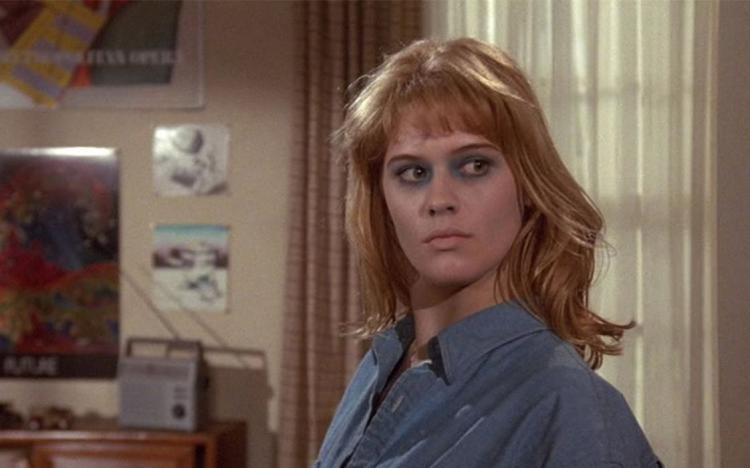Revisiting The RESIDENT EVIL Franchise Brian Collins November 25, 2020 - 3:09pm No one expects much out of a movie based on a video game, and even fewer would expect any such film to become a major franchise with almost as many entries as the game series that inspired it. But the Resident Evil films did just that; Paul WS Anderson and Milla Jovovich joined forces six times from 2002 to 2017, presenting an ever-escalating story about Alice (Jovovich) and her endless battles with zombies and other monsters that were spawned by the evil Umbrella corporation. Paul WS Anderson wrote and produced all six entries, directing four himself, and since they often pick up where the previous one left off (albeit with some nagging retcons, more on those soon) they make for a fairly consistent experience if you opt to marathon them, unlike some other major horror franchises that will give you whiplash from all of the changed directions. Sony agrees, and has boxed together the films in a new set, presenting most of them on 4K UHD disc for the first time and housing them all in a fancy box. Each film is given a digipak type case with both the 4K UHD disc and a standard Blu-ray, the latter of which contains all of the bonus features from previous releases, while the fancier 4K discs only have a handful of brief featurettes and/or trailers (if that), presumably to use every bit of disc space on the film itself. That said, given the plethora of audio options on the films, it's strange that the accompanying audio commentaries aren't included on the 4K versions; I'm the type who likes to listen to the track right after watching the movie, so it's a bit obnoxious to have to switch discs to do that, when it seems like one more audio track to join the dozen it already has wouldn't have been too draining on the "bit budget". But the films themselves are the real draw, of course, and it was fun to go back and revisit them all in fairly quick succession (it took me a little over a week to get through them all). It had been a while since I watched the 2002 original; so long that I actually forgot it does not contain a single major character from any of the games. While Umbrella is still the big bad and it uses a few recognizable monsters (the dogs!) and locations from the games, all of the human protagonists are original creations from Anderson, which makes sense when you consider the script was an unrelated one he wrote earlier and refashioned into a Resident Evil film. At the time this bugged me, I knew Milla's character was new beforehand, but as a fan of the games* I was hoping to see Jill, Chris, etc represented somewhere in the film, even if briefly. But over the years I've come around to what it *has* instead of what it lacks, and can appreciate that it was a big budget zombie film at a time when no one was making such things. The success of this film (and 28 Days Later the following year) helped revive the sub-genre, and for that I give it thanks. However the film does feel rather small in retrospect, given how much more expansive the followups were. 2004's Apocalypse is my favorite of the series, upping the ante on the action and the scale while also bringing in a few game characters, namely Jill Valentine (Sienna Guillory). Anderson left direction duties to Alexander Witt, and it's a mostly successful switch; Witt does this weird choppy slo-mo thing whenever the zombies are running around, and it looks awful, but the rest of his action is well staged. And there's a good variety to it; this is probably the most action packed entry (or tied with Retribution) as the characters are constantly on the move, so you get interior and exterior battles across Raccoon City, some more monsters (Lickers! The Nemesis!), and a sense of how much havoc Umbrella has wreaked in just a short time. I know it's often on the lower end of fans' rankings (presumably for the aforementioned zombie-cam) but I enjoyed it just as much now as I did on opening night; even if it’s not directly related to the games’ plots, it takes what works and makes it bigger, same as the 2nd game did for the original “Biohazard” that started it all in 1996. This release actually presents an uncut version of the film that runs a few minutes longer, though none of the additions are all that significant - mostly just a few extra jokes and other bits of dialogue here and there, not a lot of action-related content. Most of it comes in the church scene, which is when Alice joins the group, so I suspect most of it was just cut for pacing in order to speed up her arrival. Russell Mulcahy directed the third entry, 2007's Extinction, a curious one in retrospect since it was mostly ignored in subsequent films. In this one, which picks up several years after Apocalypse, the world is said to be completely overrun and essentially a Mad Max-ian wasteland, but that element gets dropped for the next three films. And it also suffers from Jill Valentine's absence; Guillory was unavailable for shooting and so they simply did a quick "Ctrl+R" replacement on the script, swapping out Jill for Claire Redfield (Ali Larter), another game character. There is no explanation for where Jill went and Claire is given almost no introduction whatsoever (in fact the other Apocalypse survivors are following her around), so it's a very lazy and frustrating switch, as both characters and their respective actresses deserve better. That said, it also brings Iain Glen's Dr Isaacs into the forefront after a quick appearance in Apocalypse, so that along with the novel fact that it's set almost entirely in daylight gives it a boost. And even though he wasn’t directing, I like that Anderson brought Linden “Johnny Cage” Ashby into the fold as a survivor named Chase, a little nod to his previous video game success. Extinction also ramped up the fact that there are Alice clones (in fact, our Alice might just be a clone herself!), something that takes center stage in 2010's Afterlife, which was also the series' first 3D entry and brought Anderson back to the director's chair (where he'd remain for the rest of the franchise). It's also the weakest one in my opinion, as the story is weightless even by this series' not-high storytelling standards. The entire plot is Alice looks around for a place named Arcadia only to find it after crash landing her plane on the roof of a building that is basically next door. So she heads there, and that's pretty much it. As usual, along the way she meets up with a group of survivors, half of which die as they make their way on this latest A to B journey, but (more lazy scripting ahead!) this time they bring in Chris Redfield, the first game's hero and Claire's brother, a plot point that has no bearing on anything as the two share almost no time together and the amnesia-ravaged Claire doesn't remember him anyway. But still, what luck for Alice and Claire to crash their plane on the building where he was located! It's also a slower paced entry compared to the others, which doesn't help when it's the least interesting story of the lot (on that note, it’s worth noting that it’s the only entry to not have a tie-in novelization, as if there wasn’t enough material to embellish). It seems like Anderson was simply more excited about playing with the 3D cameras (the same ones used for Avatar) than making "Resident Evil 4", so despite some fun casting choices (the great Kim Coates as a slimy movie producer is clearly having fun) and a series' best score (from tomandandy) its main attraction was seeing the various 3D effects... in theaters. The disc is 2D only (Sony's VR headset can play 3D movies even if your TV is not equipped, so like the commentaries I see this as a rather silly omission given how much they tout the Playstation on the package), so now you can just laugh at all the "COMIN AT YA!" type shots that are left in the film despite the absence of their reason for being. Otherwise though, it's a blast, giving plenty of action variety (including a big car chase!), a fun detour into Alice's suburban life (allowing Jovovich to play an average housewife for a few minutes, a very odd sight), and the rarest image in the entire series: a group of men fighting monsters without any women around. There's a sequence where Leon, Barry, and a few other soldiers storm an Umbrella facility, and it's almost disorienting not to see any women in the scene. For all the talk about how Marvel and DC kept dropping the ball on female superheroes, it's interesting to note that this six-strong franchise put women front and center for every entry. And yes: women, plural. Milla may have gotten on all the posters, but every entry put at least one woman as the 2nd lead, with Rodriguez, Guillory, Larter, or this film's Bingbing Li (as Ada) kicking just as much ass along the way. The men in the series have largely filled one of two roles: quickly dispatched fodder (any male hero who survives an entry is either killed off in the next one or forgotten entirely) or bad guys. Wesker (Shawn Roberts) and Isaacs serve as the series' primary villains, and there are several evil dudes who popped up in a single entry along the way, without any female antagonists of note (the closest is Jill, but she's mind-controlled and is returned to "good" status) When it comes to the fighting and heroics, it's the women doing the lion's share of the work in all six films. Respect! Alice also has a daughter in Retribution, but she is unfortunately one of the many survivors of this film who just disappear in the next one, as Anderson once again sets up a cliffhanger here (Alice and her friends teaming up with Wesker!) and then ignores it when it's time to make the followup. The Final Chapter picks up immediately following that one, but once again Alice is the only character we see; via voiceover she tells us that they were betrayed by Wesker (shocker!) and she was left for dead. So we have to assume that Wesker and his team killed the others (including the little girl) but none of them are mentioned by name, so it's unclear. But being unclear is kind of par for the course for this entry, as despite having a fairly solid script and some fun new characters, Anderson ditched longtime series editor Niven Howie for Neveldine/Taylor cohort Doobie White on this entry, and it's a painfully bad choice. White hyper-edits every single action sequence (and even some of the slower chatty moments) to the point of incomprehensibility; it's actually the longest entry in the series but at the same time feels edited down to (even a bit past) the bone, making every action beat a headache inducing nightmare. Apart from the extended version of Apocalypse and a few featurettes, the only thing new here is the 4K transfers, so if you're not upgraded or don't see enough of a difference to warrant the double (triple?) dip, there's little reason to get this set if you already have the previous Blu-ray releases. But if you never dove into the series or perhaps are stuck with only a handful of entries on lowly DVD, treat yourself this holiday season. There are no flat out bad entries (even Retribution, for its weightlessness, has some solid action scenes), and the behind the scenes consistency makes it a fun ride to revisit. The transfers are all outstanding (perhaps a bit TOO good in Retribution's case - the 2D presentation of the original 3D imagery, in such resolution, makes some of it look a bit like Sin City) and the Blu-ray discs are jam-packed with bonus features, so if you're into the bells and whistles of such things you'll be living inside Raccoon City for quite a while. And even if you just want the movies - they were never the greatest things in the world, but seeing such B-movie fare on an A-list budget every couple years is the sort of thing we aren't likely to get much of anymore, so while they have their missteps I think time will be kind to the series as a whole. Might as well get on board now. *I actually bought a Playstation 1 for the sole purpose of playing the first game, and likewise made Code Veronica the first game I played when I got a PS2 several years later. So it's a bit amusing to me that every one of these discs kicks off with a spot for the newly released/ impossible to find PS5, which is also heavily promoted on the packaging itself. Maybe by the time there’s a Resident Evil 8 to play I can finally find one. |
SOUTHLAND TALES Makes A Lot More Sense, Now Brian Collins April 9, 2021 - 10:39am Like most people who have seen it, I didn’t know what to make of Southland Tales the first time I watched it, which was on home video as I wasn’t quick enough to be part of its very limited theatrical release in the fall of 2007. There were certainly parts of it I really enjoyed (Dwayne “no longer The Rock” Johnson’s performance chief among them) but there was just SO MUCH going on at all times I just couldn’t connect to it. It was like getting every reveal from the entire run of Lost condensed into 140 minutes. Or, I guess, every reveal from the back half of Lost, without the primer of the information we learned in the first few seasons. While multimedia projects are a little more common now (see: Wandavision - preferably before Doctor Strange 2), Richard Kelly’s idea to present the first three chapters of his sprawling epic as graphic novels (with the film offering chapters 4-6) was radical in 2007, not to mention confusing and even somewhat expensive. It’s one thing to go see a movie and come out wanting more, but it’s another to ask audiences to buy three graphic novels at 15 bucks a piece so they can follow along with a movie that’ll cost them even more money. But even if you read them the movie is something that will likely take a few viewings (and perhaps a detailed synopsis or two) to get a firm grasp on. For the sake of brevity I’ll say that it’s about an actor (Johnson) who is suffering from amnesia and finds himself involved in a complicated blackmail plot involving a porn star/entrepeneur (Sarah Michelle Gellar), a group of Neo-Marxist rebels led by Cheri Oteri, a government surveillance group called US-IDENT, and a pair of twin brothers (Sean William Scott) who also have amnesia and may hold the key to the end of the world. Did I mention Kevin Smith in old man makeup, or Jon Lovitz as a murderous LA cop, or Christopher Lambert as an arms dealer who operates out of an ice cream truck? Like I said, it’s a lot. Too much, as it turns out, because, as much as we loved Donnie Darko and wanted to see what its creator had cooked up next, the project was a failure (Darko actually grossed more, despite playing on fewer screens and lacking the same upfront interest). But like all flops it found a cult following, and after fifteen (!) years of curiosity, the film has been given a proper special edition release in the US from Arrow Video, with some new retrospective features, the old commentary Kelly recorded in 2008, and - most alluringly - the fabled “Cannes Cut” of the film that screened at the festival in 2006 and was met with nearly universal disdain (it remains one of the lowest scoring films that competed there, ever). For those unaware, this cut ran about 20 minutes longer, featured different voiceover from narrator Pilot Abilene (Justin Timberlake), and - for those who only saw the theatrical cut - finally explained why Janeane Garofalo appeared for a second in a crowd scene (her character Teena was otherwise completely removed in the edit). I wouldn’t say their reinstatement will make much of a difference to those who hated the film, but for those like me who have grown to kind of love the damn thing, it was great to finally get a few more slivers of this ambitious, incomplete world. (If you’re wondering if there’s more to Timberlake’s bravura lip-synch to “All These Things That I’ve Done”, alas, there is not. He apparently always only sang the last third of it. It’s still a perfect scene as is though, and the behind the scenes info about it is not only fascinating but might make you love it even more.) And then a lot of those ideas came true, too. For example, a major subplot involves video of a racist cop committing murder, inspiring citizen riots “for the first time since 1992”. In 2007 when the film came out, that bit landed much differently than it does now, and it’s hardly the only instance of the film feeling like a response to what’s happening NOW as opposed to what was happening fifteen years ago. Hell, it’s mostly played for laughs and barely even counts as a subplot, but the fact that part of the storyline involves voter fraud (severed thumbs are used to create duplicate votes) feels like a cruel joke about the 2020 election. And the less said about Kelly’s once-insane idea of a porn star trying to bring down the evil politician, the better. On the flipside, for all its “ahead of its time” elements, there’s something that makes it feel like an ancient relic: the fact that it’s a hugely ambitious, original tale featuring A-list talent. This film was made for south of 20 million dollars, which is a budget the studios won’t even really consider anymore unless it’s for a horror movie. And for that relatively small sum they got an incredibly diverse cast (Dwayne Johnson, Wallace Shawn, Bai Ling, Mandy Moore, and a half dozen SNL vets alone is already eclectic as hell and there are plenty of others) and a production set mostly in LA exteriors, something we rarely see these days as most shoots are swayed by better tax incentives elsewhere. Every time I found myself kind of blown away that Kelly’s nightmares came true, I also had the recurring thought that “they don’t make em like this anymore.” It’s worth noting that this film’s theatrical release was at the end of 2007, when 2008 is the year movies kind of changed forever thanks to the one-two punch of The Dark Knight and Iron Man. Comic book movies became the driving force of the industry; even those that weren’t actually based on comics were inspired by those film’s success, with “cinematic universes” popping up (pour one out for the Dark Universe!) and, in turn, a notable decrease of original, ambitious movies. Sure, filmmakers like Christopher Nolan and the Wachowskis still get to pull out things like Tenet and Jupiter Ascending thanks to the studio wanting to keep them happy, but a time when a guy like Kelly (whose previous film wasn’t a financial success, either) can get an eight digit budget and a top notch cast for something as baffling as this is long behind us. Anyone pitching this to Sony or Universal today probably wouldn’t even get their parking validated. Maybe he should have published the comics a few years earlier; he’d be primed for blank checks. Kelly has recently teased that there is interest in reviving this world for more projects, perhaps for a streaming service, and I’m all for it. Even if he just makes some kind of animated version of the first three chapters (since it’s been sixteen years, even by this film’s standards it’d be hard to buy into Johnson, Gellar, etc playing the same age, as the entire story unfolds over a few days), it’d be great to be able to have easier access to their stories, as the graphic novels are long out of print and unavailable digitally (through legitimate means anyway). But if nothing comes of it, I’m glad we at least got this more or less definitive release of the film, which - for all its kookiness and occasionally impenetrable plot - is ultimately a kind of sweet and moving tale of people trying to create a little bit of peace and happiness for themselves in a world that has stopped making any sense, and it all comes down to someone learning to forgive themselves for screwing up. In a world ravaged by unending political fighting and a pandemic, there’s something quite uplifting about watching it now that didn’t quite register fifteen years ago. You don’t have to be able to follow every plot point (I certainly can’t), but after the past few years, I think we’re all better equipped to enjoy the relatively simple message it offers underneath all the nuttiness. |
MEMORIES OF MURDER And Ambiguous Endings Brian Collins April 21, 2021 - 11:39am NOTE: This article contains spoilers for all films mentioned within, including Memories of Murder and the recent The Little Things. Read at your own risk! Serial killer movies tend to more or less follow a template: an opening murder, the introduction of our heroes, the discovery that this murder is actually the ___th in a series, the breakthrough clue (perhaps from another would-be victim managing to escape), etc, etc. And then our heroes catch the culprit (or, on occasion, he’ll turn himself in) and justice is served in some way. The sub-genre is popular for a reason: it gives horror fans something akin to an “elevated” slasher film, but also tends to rope in the very same people who scoff at slashers because, well, serial killer films usually have A-list casts. Some even win Oscars. But these films, while usually inspired in some way by this or that true crime case (Ed Gein managed to inspire Psycho, Texas Chain Saw Massacre, AND Silence of the Lambs), tend to be otherwise fictional tales, allowing a bit of guilt-free escapism that might be lacking in a docudrama about these actual psychopaths. There’s little doubt that Clarice will capture Buffalo Bill, or that Cary Elwes can escape the combined powers of Ashley Judd and Morgan Freeman, so audiences are free to munch their popcorn and not think too much about any potential ickiness that might arise when you consider how these movies were dreamed up in the first place. However, every now and then there is a movie that splits the bill and attempts to make traditional entertainment out of a real life case that remains unsolved. This week the good folks at Criterion have added Bong Joon Ho’s classic Memories of Murder to their esteemed collection, presenting the film on Blu-ray for the first time in the US, backed by a terrific transfer and several hours of bonus features; you’d need to take the day off if you wanted to go through it all in one go. It’s been a long time coming for the Oscar winning filmmaker’s second and, according to some (including me) best film, though in a weird way it was worth the wait due to updates to the actual crimes that inspired it.
For those unfamiliar with the film, it is set in the 1980s and based on real life serial killings that occurred in the South Korean city of Hwaseong, which is largely farmland and had never dealt with anything like that before (and thankfully hasn’t since). The killer murdered ten women (ranging in age from 14 to 71) over a period of just under five years, and despite millions of man hours spent on the case (with a reported 21,000 suspects questioned) he was never caught or identified by the time Bong made his film in 2003. Bong researched the case for six months before he even began writing his screenplay, which speaks to how entrenched he was in its details. Rather than make up a solution (which fictionalizes some elements but keeps others almost to the letter, including the dates/locations of some of the murders) the Memories of Murder screenplay reflects its real life ambiguity. Throughout the film, protagonist Detective Park (Kang-ho Song, in the first of his many collaborations with director Bong) is seen resorting to outlandish and illegal practices in order to find the killer, including planting evidence and beating confessions out of anyone who fits the bill as a suspect, only for the level-headed Detective Seo (Kim Sang-kyung) to clear the suspect on this or that bit of legitimate police work. When they finally get a suspect they both agree on, he is cleared via DNA evidence at the last minute, prompting Seo to snap and Park to quit the force altogether. With no other suspects, they’re no closer to solving the case than they were at the beginning. The film’s haunting final scene takes place several years later, as Park has become a salesman and is living a normal life with a family. When a sales job takes him near the location of the first body, he walks to the spot and it’s clear the case still haunts him, something that isn’t helped when a young girl informs him that another man had been looking at that same spot earlier. Park realizes the killer is still out there, and then turns to look directly at the camera, as if he spotted his nemesis in the theater watching the recreation of his crimes. Bong has explained that he felt the real killer probably would have seen the film, and that he wanted him to feel like he was locking eyes with his pursuer. Turns out that the filmmaker’s instincts were spot on, because while he was enjoying the festival tour for Parasite in 2019, the case was finally solved. A man named Lee Chun-jae - already in jail for another, unrelated murder - confessed to all of the killings, and reportedly said he saw the film three times but felt nothing as he watched simulated versions of his horrible actions. Bong’s thoughts on this “better late than never” news found their way into the supplements for this disc, so while the film may end ambiguously, the bonus features offer up closure for those who are interested. It’s the rare sort of (for lack of a better word) happy ending for one of these notorious “unsolved” serial killer cases, many of which have also been turned into films with endings that mirror the real life frustration the police and the victims’ families have felt since the events occurred. David Fincher’s Zodiac, which mirrors Memories of Murder in many ways (including their surprising bits of humor), stays true to the real life case, leaving its trio of heroes (Jake Gylenhaal, Mark Ruffalo, and Robert Downey Jr) without resolution to the murders that terrorized San Francisco in the late 1960s and early 1970s. The success of Fincher’s Seven loomed heavily over the film at the time of its release, with some expecting the director to deliver the same kind of dark thrills. But that’s not really what the filmmaker was going for this time, and that is perhaps why the film unfortunately flopped at the box office (in fact it’s the lowest grossing film of his career). Over time it has been discovered by more and more fans, many of whom now consider it to be one of his best films. But even if the film was a giant smash, it doesn’t change the fact that the renewed interest in the case failed to yield any new viable suspects, let alone a positive identification for the murderer, who is probably dead by now given how much time has passed. Though at least that’s a “probably”. The Texarkana “Moonlight Murders”, a case that mirrors the Zodiac in several ways, can almost certainly move into “definitely” territory, as the murders occurred in the 1940s and witness descriptions placed the perpetrator in his late 30s or 40s. A suspect named Youell Swinney has long been touted as the most likely culprit, though he was never charged nor was his guilt ever proven, so it doesn’t quite cut it as closure. The 1976 film The Town That Dreaded Sundown, which was heavily inspired by (but, like Memories of Murder, did not strictly adhere to) the facts of the case, ended with an unnerving meta scene of the still-unidentified killer standing in line to see the film, without the subtlety that Bong Hoon So offered with his own chilling suggestion that he could be in the audience with the rest of us. It’s rare to see the “non ending” in wholly fictional movies. One of the few exceptions is this year’s The Little Things, in which Denzel Washington and Rami Malek hunt a killer in Los Angeles in the early 1990s (it definitely makes me feel very old that period pieces are established with posters for movies I saw theatrically or video games I vividly recall pumping quarters into). The film only really offers one suspect for the killings, played by Jared Leto, but in the final reel we learn that despite him “fitting” as a suspect, there’s really nothing to prove he was the culprit. This forces Denzel to create some closure for Malek’s character just to ease his mind, knowing that while maybe Leto WAS the killer and simply that good at covering up his tracks, there’s still a chance the actual criminal was still out there. The movie is a decent enough time killer, but the ending was unsurprisingly hated by many folks who saw it, and I can’t help but wonder if it’s because the plot was entirely fictional. With the films about the Zodiac or Hwaseong murders, ending ambiguously might frustrate some viewers, but it was the correct way to go, because at the time of the films’ productions, their respective real world cases had no answers either. However, when everything is made up, as it was in this film, there is no apparent/easy excuse for the lack of resolution. Ultimately there’s no right or wrong way to do these things; it might seem crass to fictionalize cases that are still open (and have grieving family members still seeking answers), but on the flipside these films inspire more interest in the real stories, which in turn might help them get solved. While the actual murderer has yet to be caught or identified, the films about the West Memphis Three resulted in both the interest and monetary funds (for lawyers) that at least set the innocent men free. Likewise, I can’t help but think that Bong Soon Ho’s meteoric career path helped keep the story of the Hwaseong murders from fading into memory, as every time he gains new fans (as he did with the likes of The Host and Snowpiercer) it led to more people discovering Memories of Murder and subsequently googling “who was the real killer?” These films might feel a bit more terrifying when they end on a question mark, but if it inadvertently helps lead to a real answer thanks to amateur sleuths or detectives from other areas who saw the film and decided to lend a hand, then I say let’s keep them coming, and save the Hollywood endings for the ones that were wholly dreamed up by their screenwriters. |
PARASITE EVE Needs An Advent Children Of Its Own Brian Collins June 14, 2021 - 5:58am To a newcomer, the Final Fantasy series may seem impenetrable at this stage, as the most recent entry was the 15th in the mainline series and a 16th is on the way. But those in the know can quickly wave away any fears of it being "too late" to jump on board, as the games share no real connective tissue of note. Each game tells a new story with new characters, with only a handful of creature types (Cactaurs and Chocobos are the series' mainstays) and the general tone of their narratives being the only thing that ties all the games together. Otherwise, you can pretty much pick any game you wish in the saga and get the complete story, without needing to ever play anything else. But there are a handful of exceptions (Final Fantasy XIII-3, anyone?), none more notable than Final Fantasy VII, which not only inspired a handful of other games (plus a remake that occasionally assumes you've played all of the above) but even a direct sequel in the form of an animated film subtitled Advent Children. The film originally came out eight years after the game's release and was a sort of consolation for fans who kept asking for a followup game, something series owner Square was hesitant to do. Picking up two years after the game's finale, in which Cloud and his pals were victorious against the villainous Sephiroth, Advent Children follows Cloud and (occasionally) the others as they try to stop the "physical manifestations of Sephiroth's surviving spirit" from resurrecting the tyrant. As someone who only played the main game (over a decade ago; I haven't played the remake yet), I found myself needing to check the series' Wikia more than once when I revisited the film courtesy of Sony's new 4K UHD release of the film's director's cut, which adds 25 minutes to the original version. To be clear, this version makes much more sense than the originally released version, which seemed like it was often cutting out dialogue scenes between supporting characters in order to get to scenes featuring the likes of Barrett and Yuffie faster, i.e. favoring fan service over coherence. But with my memories of the game's story ever fading, I couldn't tell you the significance of characters like Reno or Zack, the latter of whom had an entire game dedicated to his story (one I never played) despite being a relatively minor character in the main game. The disc's bonus features, incidentally, are pretty much all geared toward newcomers, as one is just a 25 minute recap of FFVII and another is an even longer compilation of the plot points from the three spinoff games, all of which can provide more context for the movie's plot and character motivations. It's got plenty of material to work with for any form of revival (new game, film... hell, I'd take a series on Quibi if it was still possible), as the game was based on a book by Hideaki Sena, but rather than adapt his story the game was essentially a sequel to it. The game (and its sequels) focused on a character who didn't appear in the book named Aya Brea, an NYPD detective who is present for a horrific event at Carnegie Hall where most of the occupants spontaneously combust. After surviving the incident, she works to figure out what is happening and stop it, battling monsters with ever increasing powers of her own until the final showdown with the villainous Eve. It's a pretty great game, with the role playing and horror elements balancing out quite nicely and (for Square) telling a pretty brief story; you could finish the game in under eight hours if you were good at it, unlike the 40-50 hour epics of their flagship Final Fantasy games. The monster designs were terrific and well varied, some you could even describe as grotesque, and with Aya by herself for the battles (as opposed to the team based nature of their RPGs), the terror quotient was always high. It also had an entirely original cast, though someone eventually stops in to give a quick recap of the book's storyline to provide the connection to its source material. I wouldn't say it was entirely necessary to follow what was going on, but I'm sure it was nice for pre-existing fans of the novel who were probably quite confused why this "adaptation" had next to no relation to the source. Here in America there were probably only a handful of "OG Parasite Eve fans", as the 1995 novel wasn't officially translated until 2005 and the 1997 film adaptation wasn't easily available in North America. And even if it was, this was before J-horror really took off here, so it likely wouldn't have attracted much interest anyway as it's not as scary (and thus memorable) as the likes of The Ring and Ju-On, which (thanks in part to their remakes) were the ones to really open the floodgates here. Unfortunately, the franchise more or less dried up after the late '90s. The second game, 1999's Parasite Eve II, was also successful (and leaned even further into the horror elements), but apart from the mangas the franchise just kind of fell by the wayside. It wouldn't be until 2010 that a revival was attempted, with the muted release of a 3rd game called The 3rd Birthday, which did little to help the franchise's standing. The game again starred Aya (albeit a redesigned one) but was otherwise more of a spinoff, and only released for the PSP, which at that point was already in decline (being a distant second to its competitor, the Nintendo DS). Long story short, I wouldn't be surprised if this article was the first you heard of it. Plus, nothing against Resident Evil, but why is it the only horror game in town these days? Dead Rising, Dead Space, Alone in the Dark, and Silent Hill are all currently on hiatus at best, with no new installments even hinted at last I checked, despite repeated fan wishes for their return. But with those series having to overcome massive expectations and (in many cases) lackluster later entries, the Parasite Eve brand remains largely untainted. Even that 3rd game couldn't have hurt much, as it wasn't even marketed as "Parasite Eve 3" (the word "horror" rarely appears in writeups about it, as well). A new Parasite Eve, be it a remake of the original or a full on reboot with new characters, with all the muscle behind the PS5 and/or Xbox Series X, could help the AAA horror game from facing near extinction, not to mention introduce this unique story to younger fans who have had almost no easy way of accessing the original games (the novel is available on Kindle, if you're so inclined). If the company feels it's too risky to try to launch a megabudget game, they can always do a new adaptation of the book as a film (live or animated) to test the waters, as its story wouldn't make for an exciting game but is a pretty good one in its own right (the original adaptation also changed the ending, so that's something else they can fix this time around). Square filed a new trademark a few years ago, suggesting something new was coming, but there hasn’t been any news since. Hopefully there is something in the works they just don’t want to reveal just yet, because it would be a real shame for the company to let Cloud and his pals be the only ones to benefit from these technological facelifts. There's a lot of material here, both untapped and underseen, so half the work of coming up with ideas is already done for you. The time has come to let us help Aya save Manhattan from mitochondrial monsters once again! *I find it kind of amazing that the 2005 films was, at the time, a jaw-dropping look at fully rendered versions of these characters, and now they look somewhat antiquated in the shadow of their FF7 Remake counterparts. |
The Beach is Back - A Horror Film Playlist Julia Kaminski June 30, 2021 - 8:21am Here we are, Summer 2021. Temperatures are on the rise and the world is slowly shifting back to some semblance of normalcy. Bikinis are being dusted off and blow-up beer pong tables are coming out of hibernation. School’s out and the Fourth of July is just around the corner. It’s officially Beach Party Season. Luckily, with every beloved and pleasant societal convention, there is a slew of horror films on deck to crash the party. Let’s set the scene: Coolers are stocked with awful beer and fruity sugar bombs. Blankets litter the sand. Carefree Co-eds launch beach balls back and forth. LFO’s Summer Girls thunders from a bluetooth speaker. The film nerds crowd around a nearby rock face being set up as a projector screen. It’s a hypothetical all night Beach Party Horror-thon and I’m your V-J. Suns out, guns out. Time for the first film on our list. Pull up a beach chair and grab a sandy hotdog. Disclaimer: You’ll notice there are no shark films on this list, this was entirely intentional. The staggering umbrella of sharksploitation is too vast a cavern to pick out one specific pearl for this list. They also get enough love on their own. This particular playlist is intended to give some love to the B-sides and sub-genre outliers. The Sand (2015)
One down. Time to go get a refill and settle in for more beach creatures. Humanoids from the Deep (1980) The sun is down. A cool breeze has begun. Time to bust out the tiki torches and Mai Tai’s for our next surf rock installment. The Horror of Party Beach (1964)
At this point in the night I’ve probably lost a few of you. As a treat to those of you who have stuck around, we’re turning up the volume a bit and diving back into some contemporary cheese. Piranha 3D (2010)
11:55, almost midnight. Enough time for one more story. One more story before 12:00, just to keep us warm. The Fog (1980)
Alright folks, the swan song is over and it’s time to go home. I hope you’ve enjoyed my fantasy Beach Party Horror-thon! Thanks for reading and it’s good to be back! |
Tura Satana - Happy Birthday to the B-Movie Icon Julia Kaminski July 16, 2021 - 1:25pm Despite it’s less than favorable reputation, the horror and exploitation genres have long since been an unexpected vehicle for female empowerment. Much of this can be credited to early female creators themselves, who saw the potential in counterculture. Women who found a voice and freedom in art that the general public would turn their noses up at. One of the earliest and most enduring icons of horror and exploitation cinema was burlesque star, Tura Satana who would have celebrated her 83rd birthday this month. Not only has Tura’s image become notorious in punk music, horror merchandise and tiki bars everywhere, but she also led a fascinating, albeit tragic, life with a level of impressive resiliency and strength. TW: Rape Born Tura Luna Pascual Yamaguchi on July 10, 1938 in Hokkaido Japan. Her father was a Filipino Silent film actor and her mother a Native American and Scots-Irish circus performer. After relocating to the states for her father’s career in 1942, Tura and her father spent 3 years in Manzanar, the Japanese Internment camp. 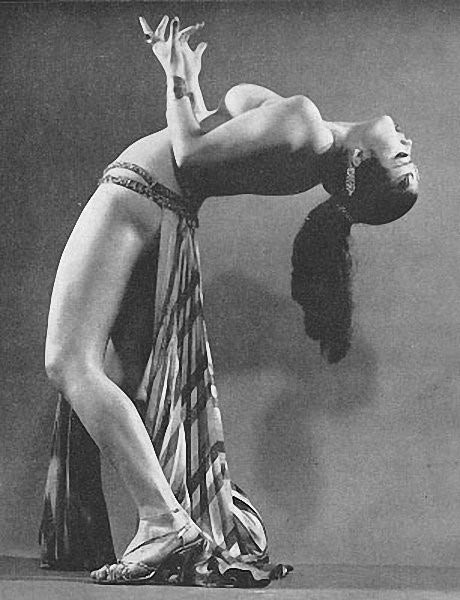 However, the training was not enough to protect her from a brutal gang rape by five of the neighborhood boys when she was only nine years old. None of the boys were ever charged and Satana believed the judge had been paid off for the boys’ freedom. In later interviews, Tura claims that over the course of the next 15 years, she tracked down each of her attackers and enacted a mysterious I Spit on Your Grave-esque revenge. |
THE DEAD ZONE Was An Anomaly, But A Good One Brian Collins August 5, 2021 - 8:50am One of the many things I learned thanks to the two historian commentary tracks on Scream Factory's blu-ray of THE DEAD ZONE is that the 1979 novel was Stephen King's first one to hit the New York Times Bestseller list. Since the book followed the likes of THE SHINING and THE STAND, I was surprised and even kind of charmed to see that DEAD ZONE was the one to break that barrier for the author, as it is barely a horror story and - forty years and over fifty books later - remains one of his more atypical selections. It's a terrific book, but if a King virgin were to ask for a good place to start their journey to becoming a Constant Reader, it would not be the first to come to my mind if they wanted to get a sense for what a "traditional" read from the author would be. So I guess it's fitting that the obligatory adaptation was also a bit of an anomaly for its marquee names, specifically director David Cronenberg and star Christopher Walken. While the actor was not yet the meme-worthy scenery chewer we now think of him as, he was still a bit of an odd character actor at that time, having already played a few "crazy" types in various genres (the comedy ANNIE HALL, for example), and so he was not the first person one would think of to play an everyman, one literally named John(ny) Smith to emphasize his anonymous nature. As for Cronenberg, it's an even more unusual choice, as not only was he racking up a number of "body horror" films by that point, but he also had written or co-written them all himself so far, making this his first feature in which he did not have a writing credit. In fact it marked a huge shift in the filmmaker's output, as nearly everything he has done since has been some form of adaptation. As with King, he eventually started expanding his horizons beyond the horror genre more often than not (the author has a new horror-free novel out this week in fact), but given both mens' names near synonymy with the genre, it's interesting that their lone collaboration was so horror lite when you consider the time it was made. Nowadays, no one would probably bat an eye at a King/Cronenberg film being fairly mild when it came to the scary stuff, but in 1983, someone walking in based on the names and knowing nothing else might be taken aback; it's only really counted as a "horror" film because of the names attached. Don't get me wrong, it's a fairly faithful adaptation when it comes to the bullet points of the novel - this isn't some LAWNMOWER MAN (or even SHINING) level diversion. But it was a long-ish book, and a movie wouldn't have time for everything, so Cronenberg and screenwriter Jeffrey Boam streamlined some of its plot and kept focus on Johnny instead of continually tracking Stillson and (to a lesser extent) the Castle Rock Killer, more or less only roping them into the story when Johnny crosses their path (Martin Sheen, as Stillson, doesn't even appear until over an hour into the film, whereas the book actually introduces him before we even meet the adult Johnny). However, while some book fans may argue otherwise, this focus allowed the movie to be more heartbreaking than the novel. Without cutting to Stillson as often, and reducing the Castle Rock Killer stuff to about 15 minutes' worth of the runtime, the movie is less about a man with psychic visions trying to save the world and more about a man who saw his life stolen away from him in an instant and how he tries to cling to some sense of normalcy with the time he has left. Interestingly, Cronenberg also removed the novel's explanation of a brain tumor that obscured some of Johnny's visions, which makes his sacrifice more tragic in my eyes. In the novel he was going to die anyway, but here in the film one can imagine he could have lived a long life, albeit alone, but opted to assassinate Stillson to make sure the people he loved (namely, Sarah, his girlfriend that started a family while he was in his coma) would get to keep living the life he was denied. It's a heartbreaking conclusion, one I think would not register as well had Cronenberg dove into the pulpier and "genre friendly" elements of the story along the way, or even the brain tumor that had him choosing one way of dying over another. Yes, *David Cronenberg* removed a subplot about someone's body turning against them! This movie is so off-brand! It's also a warm film, and I don't mean the climate. As always, Cronenberg shot it in snowy Canada, but the humanity in the film, not just from Johnny but also Brooke Adams' Sarah, Sean Sullivan as Johnny's Dad, and Herbert Lom as Dr. Weizak (you know you're in strange territory for a Cronenberg film when a guy who runs an institute is a sympathetic ally); you get the impression any one of them would have taken that bullet for Johnny if they were given the chance. There's a scene about halfway through that breaks my heart, when Sarah stops over at Johnny's and finally consummates their relationship (which was to happen the night of his accident had he not gotten sick) as a means of closure. Afterward, he's playing with her son while his dad is chatting with Sarah, and one were to watch this scene out of context you'd never know it's not an actual family. But that's not his son. Sarah isn't talking to her actual father in law. And Johnny will never be able to have that kind of normalcy again. It's shattering. The film performed well enough at the box office to be considered a hit, keeping Cronenberg in Hollywood's graces for a while (his next film was THE FLY) and proving that King's less horrific fare could draw an audience as well; in fact, STAND BY ME hit theaters exactly one week after THE FLY and was, at that time, the highest grossing film based on his work to date. Walken rarely took heroic lead roles in mainstream films after this, falling back on his bread and butter of villains and supporting roles (his next appearance was as the villain in the Bond film A VIEW TO A KILL), though he did spoof Johnny on SNL a decade later, a testament to the film's lasting presence. It's remained an easy choice when the subject of "Best King Adaptations" comes up, though I feel it's in the running for "top five" status for Cronenberg and Walken as well, even if it's gonna stick out among the others. THE DEAD ZONE might not be the movie anyone would expect if they saw the names on the poster and knew nothing else, but I've rarely encountered anyone who walked away disappointed. Good is good, no matter how different it might be from the norm. |
The Future is Fungus Julia Kaminski August 19, 2021 - 11:54am Any time a major historical event takes place, it is not unusual to see a wave of predictions from the horror media and fanbase regarding the next trend in content. Pre-pandemic it seemed as though techno-horror was on the rise. Films like Leigh Whannel’s Upgrade and Invisible Man, and Alex Garland’s Ex Machina presented a terrifyingly plausible dystopian future where the whims of wealthy geniuses become a threat to themselves and humanity as a whole. Granted, the recent, gratuitous space travel and overall worrying behavior of billionaires in this country still keep these films very much relevant. But it seems the pandemic has overall shifted our creative gears to the other end of the spectrum in the form of Eco-Horror. In many ways, Eco horror is the antithesis of techno-horror We went from the fear that our own creations would turn on us, to the existential realization that we were never the one’s in charge in the first place. Now, this is in no way a new concept, just one that has quickly gained traction within the last year. An earlier and unquestionably influential example of pre-pandemic eco-horror would be Alex Garland’s sophomore masterpiece, Annihilation. Annihilation seemed to be one of the first of the modern wave of sci-fi, which featured a biological threat unbound by human reason and emotion that would eventually consume and absorb all life on earth, robbing humanity of it’s autonomy. Garland’s choice to follow up his robotic debut of Ex Machina with Annihilation seemed almost prophetic in hindsight. While the bio-threat in the film is apparently introduced extra-terrestrially, more recent eco-terror films suggest that the threat is already living among us and may have been here longer than we have.  While the previously mentioned films were a result of being on the apparent precipice of a technological and scientific renaissance, the pandemic reignited a primal fear of mother nature. This could explain the heavy folk-horror influence in these films. One of the side effects of our collective existential crisis, is the suspicion that we have taken our understanding of science and nature for granted and that the earth still possesses a cornucopia of yet undiscovered threats. Two recent films released in the past several months that fit very firmly into this category, are Ben Wheatley’s In the Earth and Jaco Bouwer’s, Gaia. In the Earth is in every way a pandemic-era film both in content and the because the entirety of production took place within Covid times. While a mysterious (and familiar) disease ravages the city, a pair of park scouts venture into the wilderness on a search for a scientist researching fungal systems. After a seemingly random attack, the pair find themselves in a dire situation and must put their trust in a stranger they encounter in the woods. Although initially suspicious, the pair follow the stranger to his encampment and accept his medical treatment as well as food/water. Unfortunately, they quickly realize that their trust has been greatly misplaced as the man drugs them and begins performing bizarre rituals. After a narrow escape, the two find themselves at the research camp they had initially been searching for. Here they learn that their captor was in fact the unhinged ex-husband of the elusive scientist. She explains that after coming into contact with a strange mist excreted by a fungus native to the region, the man had what seemed to be a very bad trip, after which he deteriorated into an extreme zealotry. He began worshipping the organism as if it were an old God requiring sacrifice. With injury and isolation delaying their escape, the scouts soon realize that the wilderness that surrounds them may have more sentience than they originally realized. Although just as anxiety ridden as many of his previous films, In the Earth is a more atmospheric endeavor for writer/director Ben Wheatley. The unnamed pandemic that ravages the city is not a major plot point and is instead used as well executed plot device to infuse a sense of claustrophobia and otherwise explain the heightened hysteria and brutality committed by and against the characters with a Ben Wheatley signature glee. The 2021 South African film Gaia possesses an eerily similar concept, albeit with far more body horror influence. After embarking on a surveillance mission into the South African wilderness, a forest ranger finds herself injured and separated from her partner. She is rescued by a pair of father and son survivalists who bring her back to their cabin to recuperate. The woman quickly learns that the jungle contains a full eco-system of phosphorescent creatures that seem to be the product of some ethereal fungus. As the woman learns more about her rescuers and the danger that surrounds them, The one theme that these films all seem to have in common is the concept that surrendering control to a collective unconscious is ultimately inevitable and the wide array of ways humans cope with the futility of that reality. This oddly specific sentient fungus theme has even crossed over into the literary world, appearing in the popular bestseller by author Silvia Moreno-Garcia, Mexican Gothic. The philosophical roots run far and deep in this subgenre and due to increased international trade and military activity, there has been a small wave of scientific discoveries of fatal fungal attacks on multiple species around the world. So it is entirely possible that we will get even more fungus films as they become closer and closer to reality. |
DEADLY FRIEND's Source Novel Was A Basketball-Less Bummer Brian Collins November 2, 2021 - 10:11am While I obviously didn't know who he was at the time, the first Wes Craven movie I ever saw was DEADLY FRIEND, thanks to frequent cable showings when I was about seven years old. I'm not sure if anyone else did this, but I would frequently watch the end of movies on HBO or whatever; if it started at 3pm and I turned it on at around 4, it didn't matter to me that I had no context for anything I was seeing (sometimes I'd even RECORD the films like this, which is why I have seen the last 35 minutes of SPACEBALLS about 100x and the first hour maybe three times). As it turns out, DEADLY FRIEND was an ideal film for such an odd practice, as (like my beloved SHOCKER) it takes a while for Craven to get to the part of the film that would be described in a single line. In this case, that'd be "A killer robot girl murders everyone who wronged her," which is confined to the third act. In order to *get to* the killer robot girl, first we got to meet and fall in love with a robot (named BB and voiced by Roger Rabbit himself, Charles Fleischer) that is then "killed", and also do the same for Sam (Kristy Swanson), the literal girl next door to our super genius protagonist Paul (Matthew Labyorteaux). The movie is half over before she's even killed, let alone revived using BB's computer chip, so since I was only seven at the time (and thus not yet interested in girls) all the puppy dog romance stuff wouldn't have appealed to me anyway. Hell, it's possible I wouldn't have even gotten to the "good stuff" if I was watching it from the beginning - I would have gotten bored, turned it off, and watched FRIDAY THE 13TH PART 4 again instead. But over the years, as I discovered more of Craven's filmography (including, yes, SHOCKER, plus THE PEOPLE UNDER THE STAIRS and that one movie with the guy in the brown hat), I'd also read FANGORIA interviews with the master and discover that DEADLY FRIEND was something of a sore spot for him, with the things I liked (i.e. the infamous basketball kill) being added to the film against his wishes. In a rare reversal of filmmaker and studio intentions, Craven wanted to make something PG rated, a science-fiction themed doomed love story - his point of reference being what John Carpenter was able to do with STARMAN, in fact. However, the studio, having landed Craven after the success of NIGHTMARE ON ELM STREET, wanted to capitalize on his burgeoning brand and load the film with gory kills. Being a professional, he shot these scenes himself rather than walk off and let someone else do it, but more or less disowned the film once it was finished. So when Scream Factory announced the film would be joining their prestigious lineup, there was hope that they'd be able to find Craven's original cut of the film, without all the gore and with more focus on the love story between Sam and Paul. Alas, as is often the case, they couldn't find any of the footage in any form, so just as we've had for 35 years, the only evidence of their existence is in the trailers and stills from the production; mere glimpses of the stronger film it likely was before the studio demanded ill-fitting violence (which, of course, was then largely dialed back by the MPAA anyway). However, I took the opportunity to finally crack open FRIEND, the Diana Henstell novel from 1985 that the film was based on, to see if I could get a better sense of how Craven's film might have played when it was presumably closer to its source. However the weird thing about the movie is that while they aged everyone up, they left their actions relatively intact. If you account for the usual streamlining of a book when it becomes a movie, it's actually pretty faithful as far as the bullet points of the narrative are concerned. Sam's death is identical (her dad knocks her down the stairs, though in the book she dies instantly instead of being brain dead), the old lady across the street serves the same capacity, Paul's mom is the most oblivious woman on the planet, etc. Even some smaller details, like BB's design and Sam coming over for Thanksgiving due to her drunk dad not bothering to prepare anything, survived the translation from page to screen. But by making everyone older, Craven's film has elements that simply don't work as well - including the primary plot point of the protagonist resurrecting his would-be girlfriend without any sort of plan of what to do with her after that. It's a kids' fantasy film at heart, but with near 20 year old actors going through the childish motions. Even the very idea of him having a robot follow him around everywhere is kind of odd when he's clearly old enough to drive (likewise, his same-aged friend has a paper route, denying the opportunity to some 12 year old who can't get a real job!). The book also allows you into "Piggy's" head and explain why he can't simply rebuild BB after it's destroyed (Sam's dad is actually the one to do it here, with the old lady across the street merely helping him lie to the police about what happened). Even the mom is pretty devastated about it in the novel, and when someone actually asks "Why not just rebuild him?" it is likened to replacing a dead pet by buying one of the same color and breed - it might look the same, but it wouldn't BE the same, because the real one is dead. In the movie they basically skip past that dilemma and go almost instantly into the events leading to Sam's death, with Paul seemingly doing just fine without his robot pal. In the book losing Sam is kind of a last straw for his emotional turmoil (which is already considerable as he is also dealing with his parents' divorce as well as accidentally causing the death of a classmate during a science lab mishap, two elements completely absent from the film), but here he seems fine until she dies, at which point he turns on a dime. And that's not to say that a teenaged Frankenstein tale wouldn't work - it's just that they kept all the other story elements intact, rendering the characters' actions bewildering when they're meant to be kind of pitiful. When Piggy and Tommy (also given an unfortunate nickname, "Slime") have to bring Sam's body from the morgue to his lab, part of their struggle is that they don't know how to drive and are too small to carry her weight on their own, so you almost feel kind of embarrassed and wanting to help them even though it's definitely way way wrong. There are a lot of "Maybe I shouldn't have done this" kind of moments even before Sam starts killing her offenders, whereas the movie never bothers to address any kind of struggle - internal or external - on Paul's part at all. He gets into a fight with Tommy about it, but that's about it (and nothing compared to the book, where Sam ultimately kills him too, further breaking Piggy's spirit as now he's lost his only other friend as well). It goes without saying that the ending is different; the "A scary looking robot comes out of Sam's skin and kills Paul" scene was added at the insistence of the producer and hated by nearly everyone else. It's not fully known what Craven's original ending entailed; Sam being in a white dress seemed to play some part of (a wedding?) but details are sketchy at best and, again, they couldn't locate even a VHS copy of the footage like they've been able to for some of the other notoriously mangled films. But being that it's a studio film, we can assume it was never going to end like the book, with Sam plummeting over a bridge during a scuffle with Piggy (trying to stop her from wreaking further havoc after killing Tommy), and then, seeing no other choice for himself, Piggy jumping to his own death after her, fulfilling the "Frankenstein meets Romeo & Juliet" promise of what was likely the starting concept for the novel in the first place. It's a truly sad ending, in part (again) because of the younger age but also because it shows the lengths he was willing to go in order to have Sam back in his life, a need/obsession the movie's version never quite manages. |
Are Audio Commentaries Going Extinct? Brian Collins November 17, 2021 - 9:40am "At least there's a commentary..." That was a recurring thought in my head throughout the DVD era; I'd see a movie I enjoyed (but perhaps didn't outright LOVE) on the shelf at a decent but not great price, and justify the purchase by feeling I could get double the viewing enjoyment by watching the commentary on an otherwise bare-bones disc. For a while, commentaries were practically a guarantee for any major film when it hit disc - some even had multiple tracks, even if they weren't exactly high art. I remember watching Resident Evil: Apocalypse *four* times the week it came to DVD: once to watch the film, then again for each of its three commentaries. Even if there wasn’t much in the way of deleted scenes or behind the scenes features, there would be a director commentary to sweeten the deal. But over the years, the practice has been largely abandoned from newer films released by the major studios. It's not hard to see why; with more people preferring to stream the films, the physical DVD/Blu is practically an afterthought - there are some theatrically released movies that haven't come to disc at all, let alone with bonus features (The Empty Man, for example, hit theaters a year ago and still has no physical release even scheduled). Some keep the tradition up; the new Saw film, Spiral, has a pair of tracks (one with the director, the other with the producers), but that's the exception where it was once the rule. Boutique labels releasing special editions of older films remain committed to historian tracks and the like, but it's increasingly rare to find a director sitting down and discussing the film while it's still fresh in their head. I was hoping the new Candyman would buck this unfortunate trend, but alas - the only audio options involve the film's actual soundtrack. It's not a bare-bones disc, thankfully - director/co-writer Nia DaCosta, producer Jordan Peele, the cast, etc are all on hand for video-based supplements, but everything they're saying is reduced to sound bites, where anyone with decent hearing can probably spot where their thoughts are being truncated to form something easier to digest before cutting to another film clip. None of these featurettes last more than five or six minutes, and so - while they're not without merit - you are constantly feeling like they're barely scratching the surface of more interesting areas to explore. All of which just had me thinking, when I first saw the movie, that I couldn't wait to hear her commentary track (and/or one from Peele, who provided a terrific track for Get Out but, in keeping with the tradition that inspired this article, didn't do one for Us), thinking maybe she could defend and maybe even change my mind on a few of the things that didn't work for me. But there's little chance of that in a quickie featurette that, even with the occasional spoilers, feels more like something promotional than aimed at peeling back the layers of its narrative. Again, this is a movie that has a lot to say, from intelligent filmmakers who obviously aren't being elusive about their thought process and their ideas - why can't we hear from them in depth? This is especially frustrating when it comes to the collection of deleted scenes and the "alternate" ending, which I put in quotes because there's nothing alternate about it - it's merely an epilogue that they opted to cut. In the new ending, we catch up with the surviving characters some time later at an art gallery celebrating Anthony's Candyman-inspired work, seeing that it's clearly both successful and that the people are engaging with it (a nice contrast to an earlier scene in the film where the audience wasn't connecting to his newest pieces). Why was it cut? Well... I have no idea! In the olden days (less than a decade ago), excised material like this would almost always include optional commentary by the director, explaining why it was cut, where it would have gone in the film (if the scene itself lacked the context), etc. But without that insight, we are left to wonder why such scenes were dropped. In the case of the ending I think the one they have is just fine, but the other scenes, all of which are actually longer versions of ones that are still in the film (two with the art critic, one with Brianna's father, and one with the ill-fated white girls in the bathroom), are all interesting additions that wouldn't have slowed the film down or anything, so knowing why they were snipped might have been nice. Unfortunately I do not see this trend being reversed; as long as streaming remains the bigger draw, the studios will continue doing the bare minimum for the majority of their discs, and tracks will be increasingly niche. And then in twenty years Scream Factory or Arrow will do a special edition of Candyman that will have a track from a supporting actor or the cinematographer or someone, doing their best to remember specifics about something they made decades ago. It's a shame that that's the best we can hope for nowadays, but I'll always be grateful for the decade and change that they were practically a given. The "film school" lessons they imparted were invaluable to budding filmmakers who listened, and the group tracks gave us another two hours of entertainment from any number of films (any Kevin Smith and cast track is probably funnier than the movie itself). It seems that time is gone, and unfortunately there's only so much we can glean from the soundbites we get in featurettes that aren't much longer than trailers. (Speaking of which, they often don't bother putting the trailers on the discs anymore, either.) *They'd like to say they're ignoring BOTH sequels, but the film repeatedly refers to Daniel Robitaille, Candyman's true name which was only revealed in the first sequel, 1995's Farewell to the Flesh. It’s canon! Day of the Dead can continue to rightfully be ignored, though. |



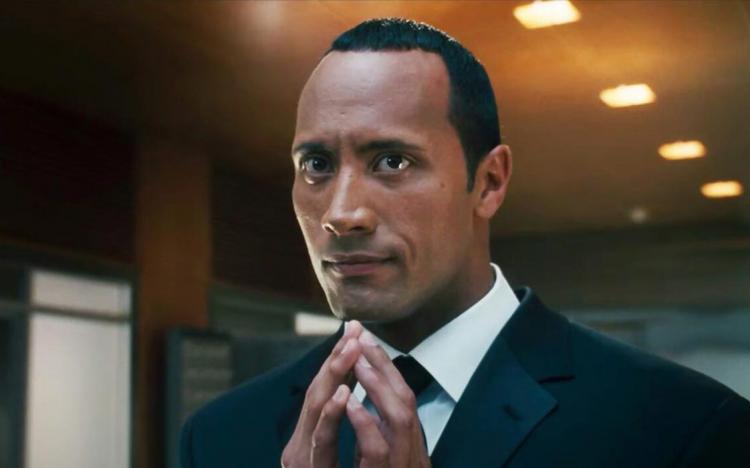

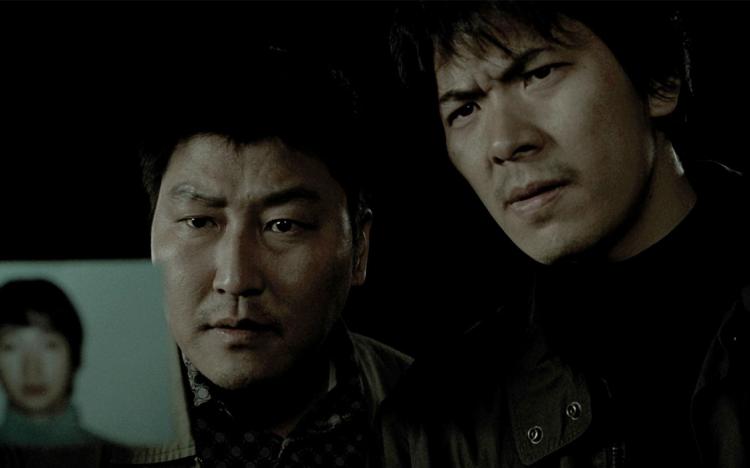
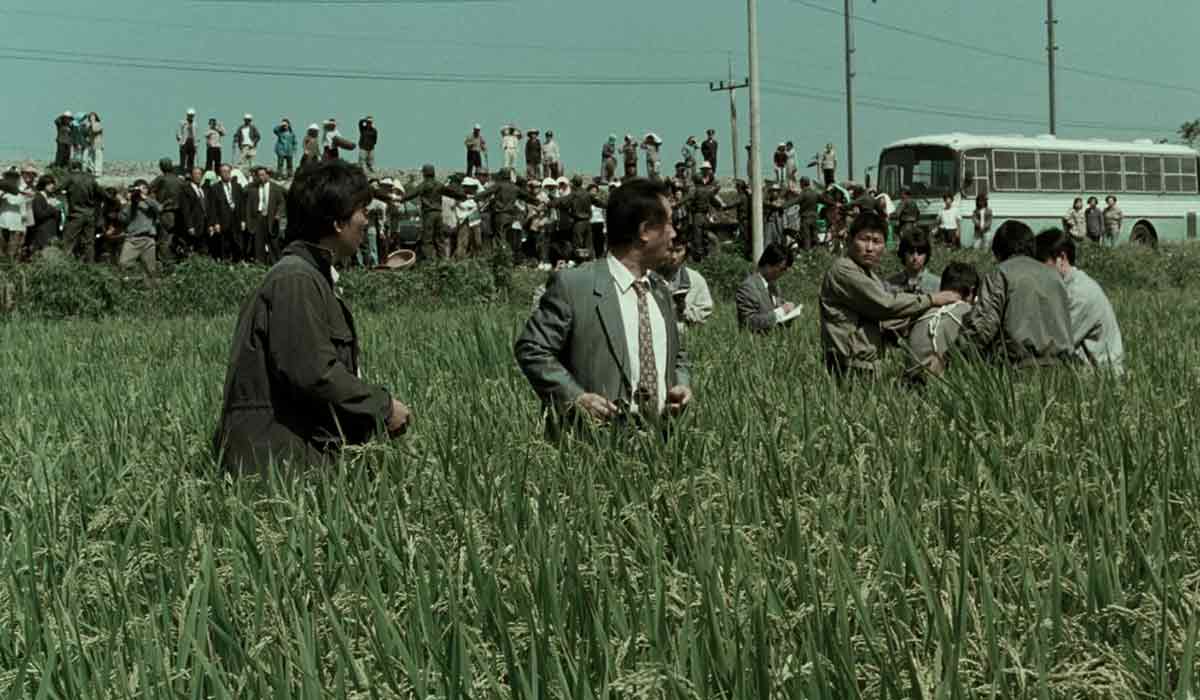
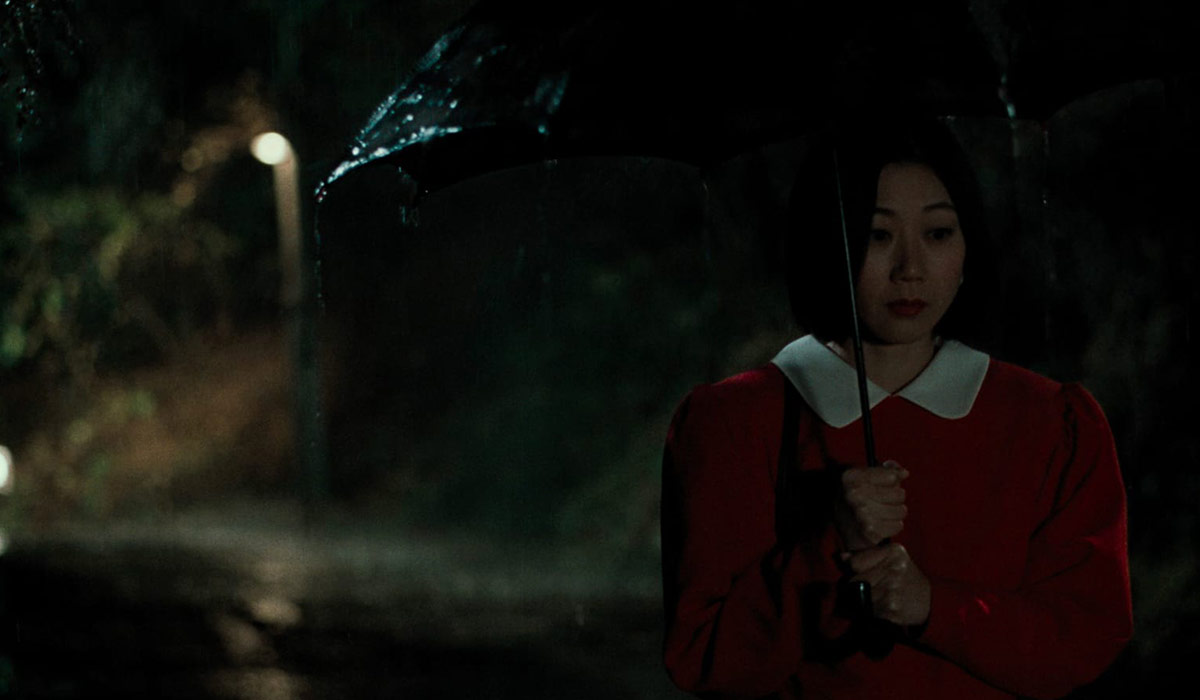




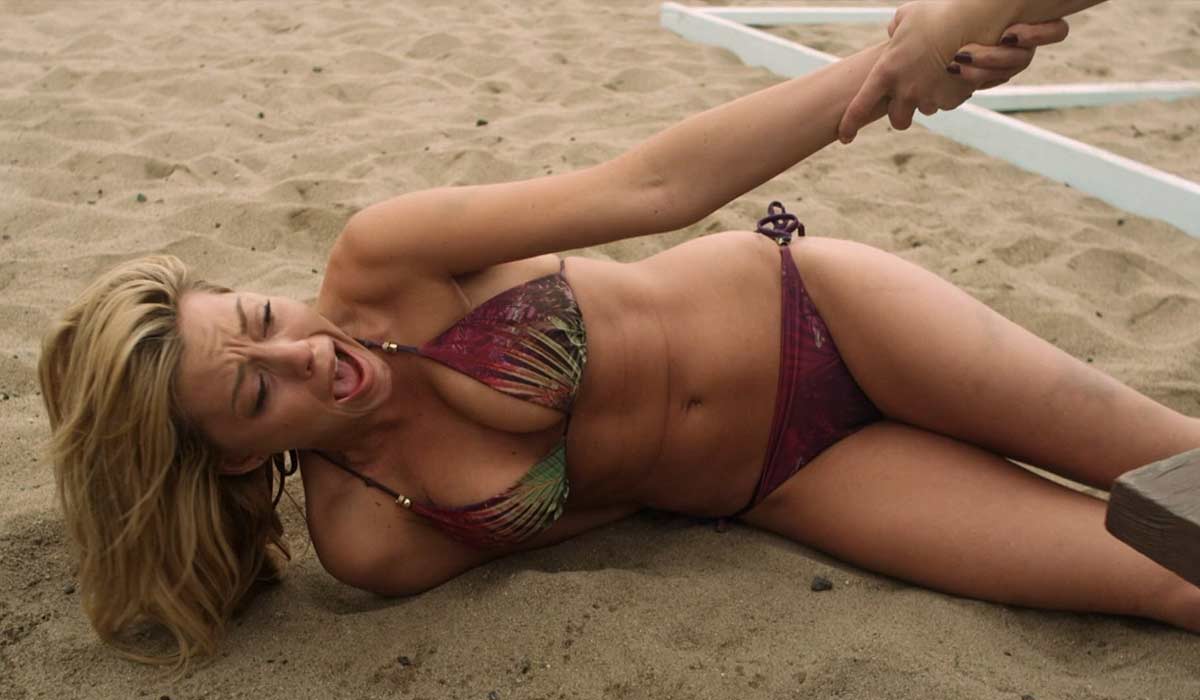
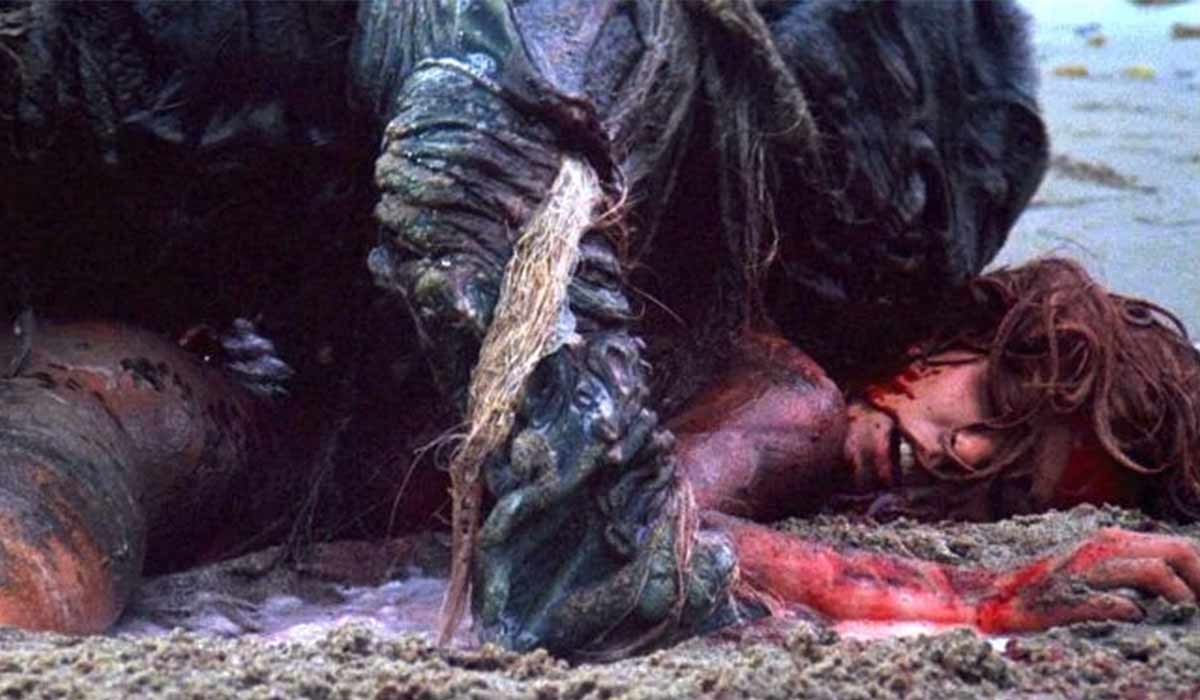
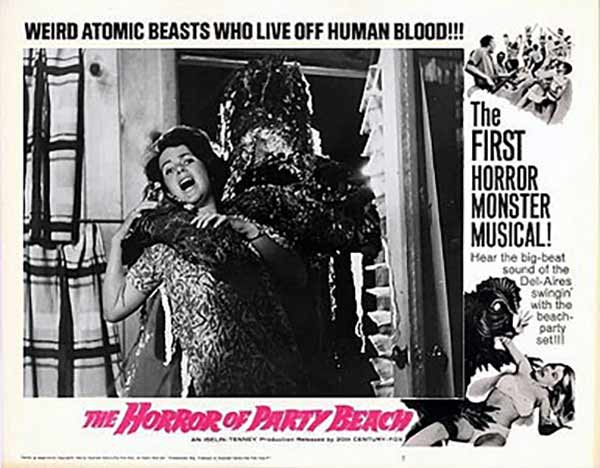


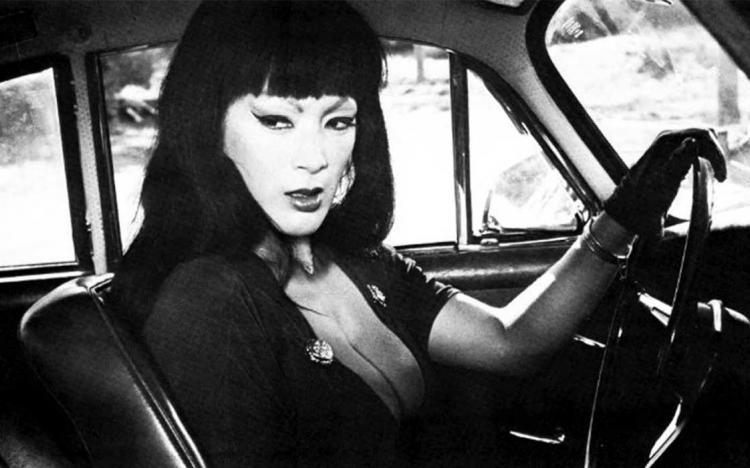
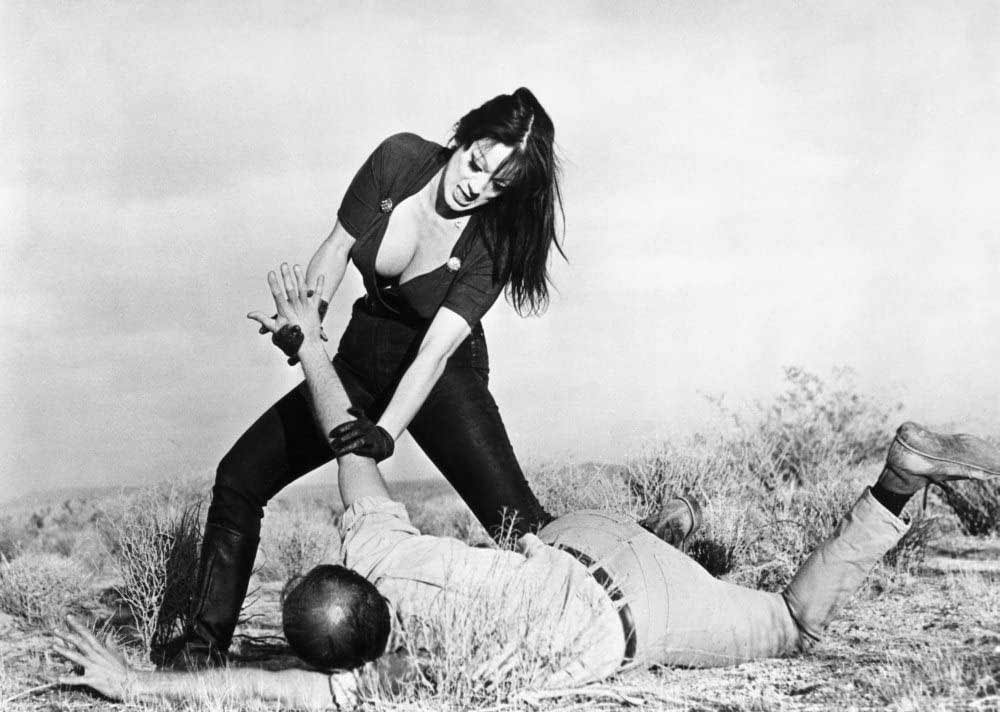
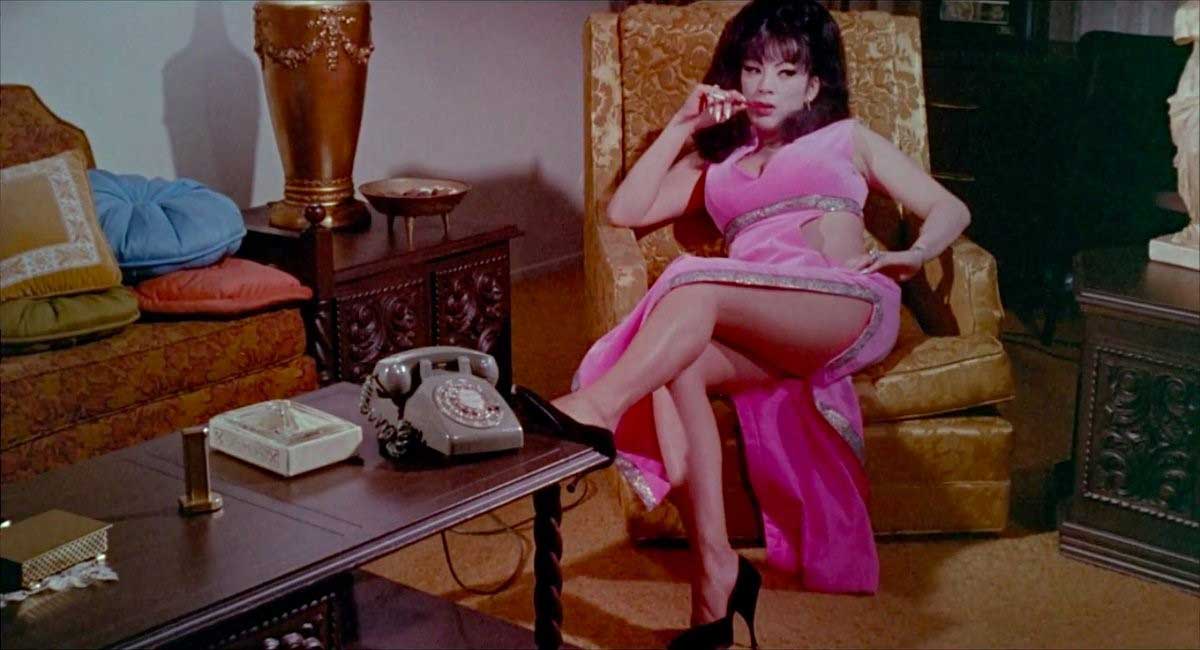
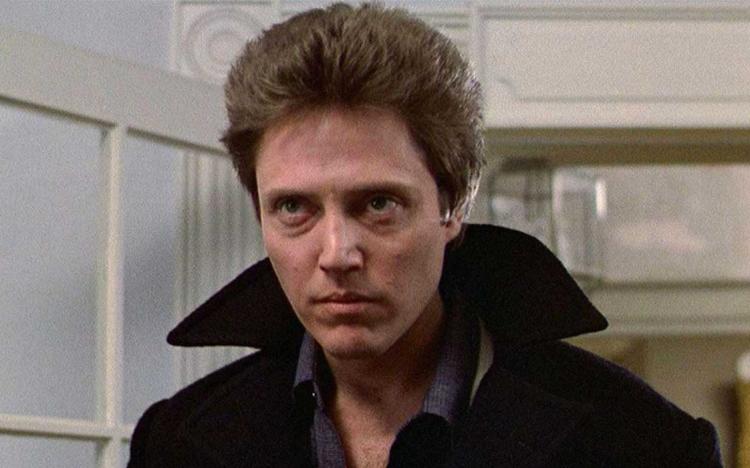
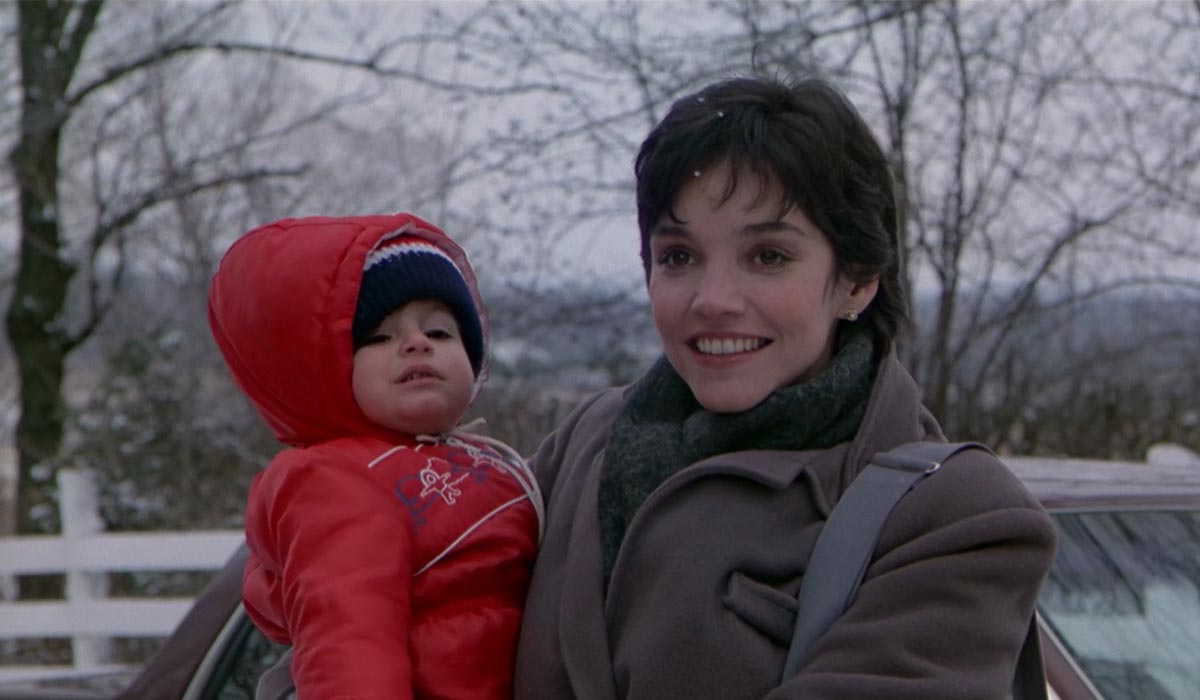


 she learns that the father has fallen into a similar form of idolatry as featured in In The Earth. The father’s attempt to contain and understand this all-consuming fungus has evolved into over-zealous worship. Overwhelmed by her new surroundings, and the realization that this potentially sentient fungus has already taken root within her body, the ranger struggles to find a way to escape the many dangers surrounding her. While In The Earth waits to confirm the otherworldliness of the biological threat, Gaia shows it’s hand pretty early on, sporting some fairly enchanting creature designs. The alarmingly invasive organism seems heavily influenced by Garland’s Annihilation and potentially even 2008’s The Ruins. Despite the two films’ considerably similar plots, they manage to explore a myriad of independent themes. From suspicion and distrust in the wake of an impending global collapse, to the difficult choice between self-preservation and self-sacrifice.
she learns that the father has fallen into a similar form of idolatry as featured in In The Earth. The father’s attempt to contain and understand this all-consuming fungus has evolved into over-zealous worship. Overwhelmed by her new surroundings, and the realization that this potentially sentient fungus has already taken root within her body, the ranger struggles to find a way to escape the many dangers surrounding her. While In The Earth waits to confirm the otherworldliness of the biological threat, Gaia shows it’s hand pretty early on, sporting some fairly enchanting creature designs. The alarmingly invasive organism seems heavily influenced by Garland’s Annihilation and potentially even 2008’s The Ruins. Despite the two films’ considerably similar plots, they manage to explore a myriad of independent themes. From suspicion and distrust in the wake of an impending global collapse, to the difficult choice between self-preservation and self-sacrifice.